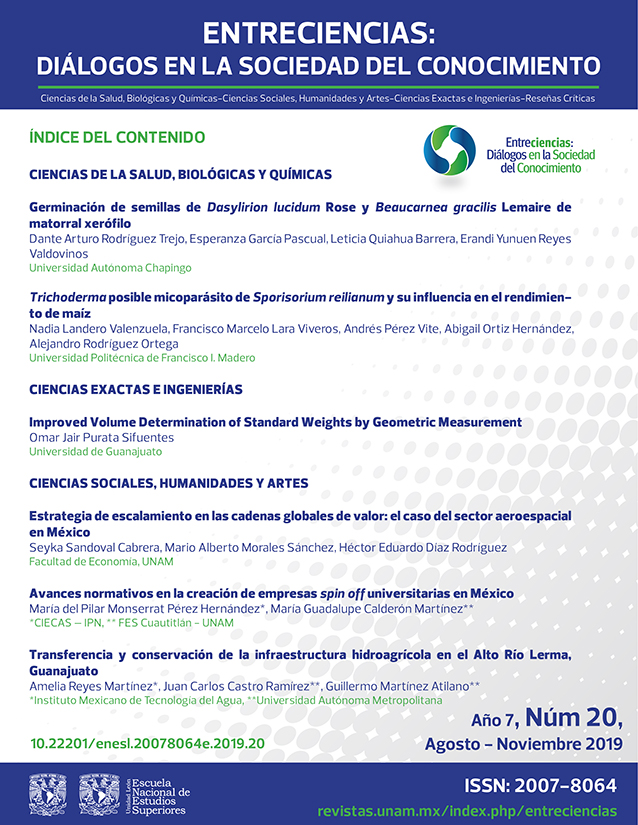Improved Volume Determination of Standard Weights by Geometric Measurement
Main Article Content
Abstract
Purpose - to develop an improved mathematical model for volume determination of standardized weights by geometric measurement.
Methodology - the new model eliminates an assumption considered in the current model published in the OIML R 111-1 recommendation, since it considers existing deviations from the assumed shape of the weights in the current model, specifically in the so-called knob and ring sections. These deviations might originate during the manufacturing processes of the weights.
Results - an improved mathematical model for the calculation of the volume of standard weights by geometric measu- rement was deduced. Additionally, the model has the advantage of eliminating the risk of scratching the weights, which makes it possible to extend the use of the new model to higher accuracy classes.
Limitations - the proposed model involves the possibility of making geometric measurements without surface contact of the weights, for example, with an optical comparator.
Findings - an assessment of the current model against data previously published allows highlighting the relevance and higher accuracy of the new model, which makes it possible to calculate the density of standard weights, even for E class, through only geometric measurements.
Downloads
Article Details
Citas en Dimensions Service

Entreciencias: Diálogos en la Sociedad del Conocimiento recognizes and respects the moral rights of authors as well as ownership rights transferred in non-exclusivity to the journal for its open access dissemination and its preservation. Hence, authors who publish in this journal accept the following conditions:
- Entreciencias: Diálogos en la Sociedad del Conocimiento from Universidad Nacional Autónoma de México is distributed under a Licencia Creative Commons Atribución-NoComercial-SinDerivar 4.0 Internacional, which allows the information and metadata to be used without commercial ends as long as proper citation is utilized.
Authors will have the right to non-exclusively distribute the contribution made to Entreciencias: Diálogos en la Sociedad del Conocimiento. That is, they will be able to include it in an institutional repository or disseminate it in other digital or printed media as long as it is explicitly stated that it was first published in Entreciencias: Diálogos en la Sociedad del Conocimiento. The following information must additionally be included: author, year, volume, page numbers, electronic paging, and DOI.
Authors, whose publications have been accepted, will have to send the Letter of Copyright Transfer in the corresponding format, filled out and signed by the author or authors.

